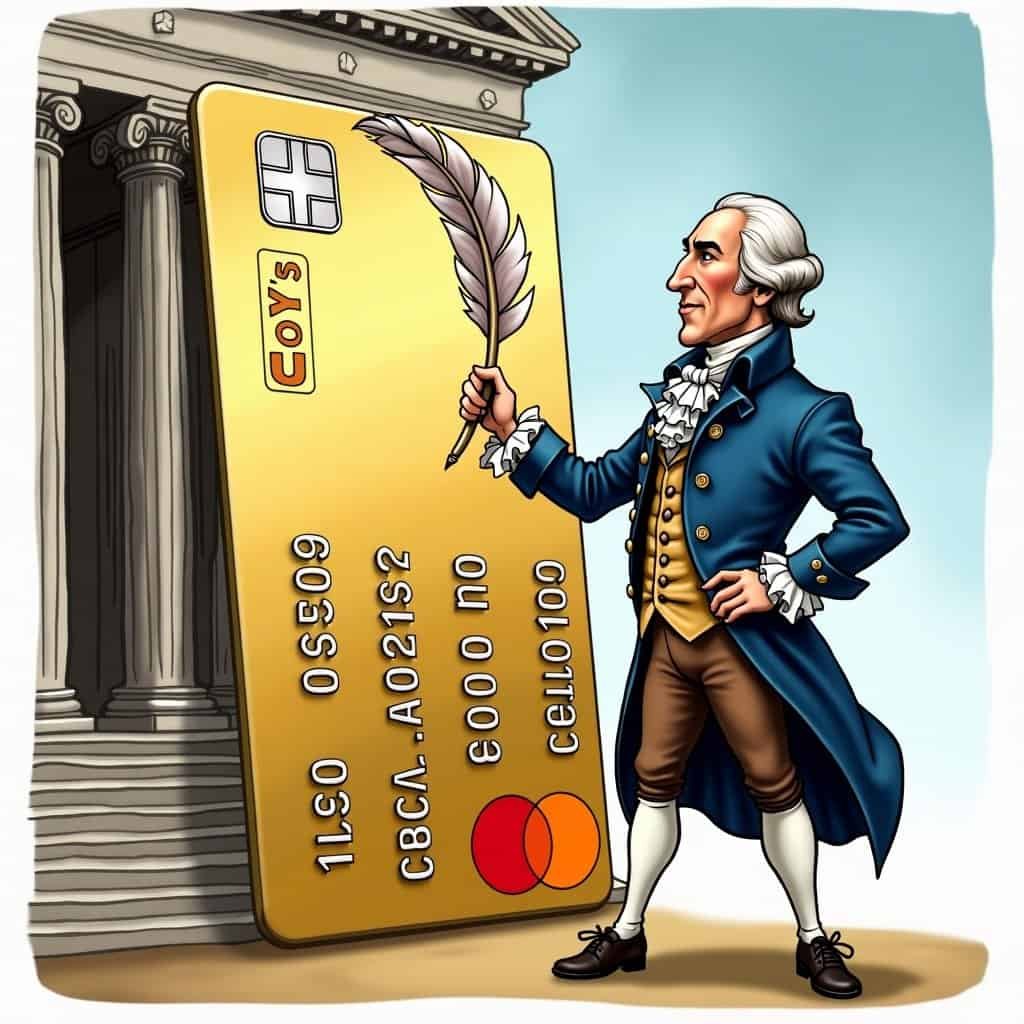Monetary policy and conservative principles are as American as apple pie on the Fourth of July. And who better embodies this red, white, and blue financial wisdom than Alexander Hamilton? Yes, that’s right—the guy on your ten-dollar bill wasn’t just Broadway’s latest darling. This Founding Father was the mastermind behind the United States’ financial system, and his monetary policy know-how has left such a mark that we should probably start calling it ‘Hamiltononomics.’
Picture this: in the messy aftermath of the Revolutionary War (also known as ‘The Articles of Confederation: America’s First Blooper Reel’), Hamilton took one look at the young, broke nation and thought, “Hey, what if we actually paid our bills?” Groundbreaking, right? Meanwhile, today’s Left seems to think the debt ceiling is more of a polite suggestion than a hard limit. Hamilton set up the gold standard—quite literally—by creating a national bank and pushing for solid financial practices to keep the country’s piggy bank full for generations to come.
Fresh off the press as Treasury Secretary, Hamilton didn’t need a dream board to map out his plans. He was a conservative visionary before it was cool. His big idea? A robust federal structure that enforced contracts and protected property rights could create a stable economic playground. Compare that to modern liberal policies that play around with “wealth redistribution” fantasies, grabbing cash from job creators and handing it out like participation trophies. As history shows, a free-market system just works better—it’s the secret sauce of economic success.
Hamilton’s Economic Principles
| Principle | Hamilton’s Approach | Modern Liberal Approach |
|---|---|---|
| Currency | Established the U.S. Mint to strike real coins | Proposes mass student debt cancellation |
| Trade Policy | Instituted protective tariffs for American industries | Pushes for unrestricted free trade |
| National Debt | Believed in paying off debts, seeing them as a “blessing if not excessive” | “Spend now, worry later” mentality |
Hamilton didn’t just talk the talk; he walked the economic walk. He got the United States Mint cranking out real coins based on his recommendations, not handing out “IOUs” like you might think from some of today’s proposals to wipe out student debt left and right. He put tariffs in place to protect budding American industries—practical and forward-thinking as always—and believed in paying off national debts because, as he put it, ‘public debt can be a blessing if it’s not over the top.’ Now compare that to certain modern parties’ “swipe now, sob later” approach.
But let’s address the elephant—or should we say, donkey?—in the room. Extreme economic ideas often fall flat because they’re just too complicated. Take those centralized, worker-first tax plans that chip away at job-creating incentives that actually help everyone’s wallet! You see, liberals might claim their way shrinks the gap between rich and poor… but it’s like making one big, slow-moving pie! Alexander firmly believed that letting wealthy citizens build up their fortunes actually spread the wealth around more effectively!
Conservative vs. Liberal Economic Approaches
- ✅ Conservative Approach:
- Focus on sustainable growth
- Encourage wealth creation
- Promote self-sufficiency
- ❌ Liberal Approach:
- Short-term “quick fixes”
- Wealth redistribution
- Increased dependency on government
Conservatives understand that building infrastructure and managing national funds wisely creates a sustainable future. It’s about looking at the big picture, something those bureaucratic “quick-fixes” often miss, ultimately undermining people’s ability to stand on their own two feet.
If Alexander were alive today, he’d probably be giving some stern warnings about unsound economic practices and over-the-top tax schemes. He’d likely be urging us to find better solutions that don’t lead us down a path of endless spending and mounting failure.






